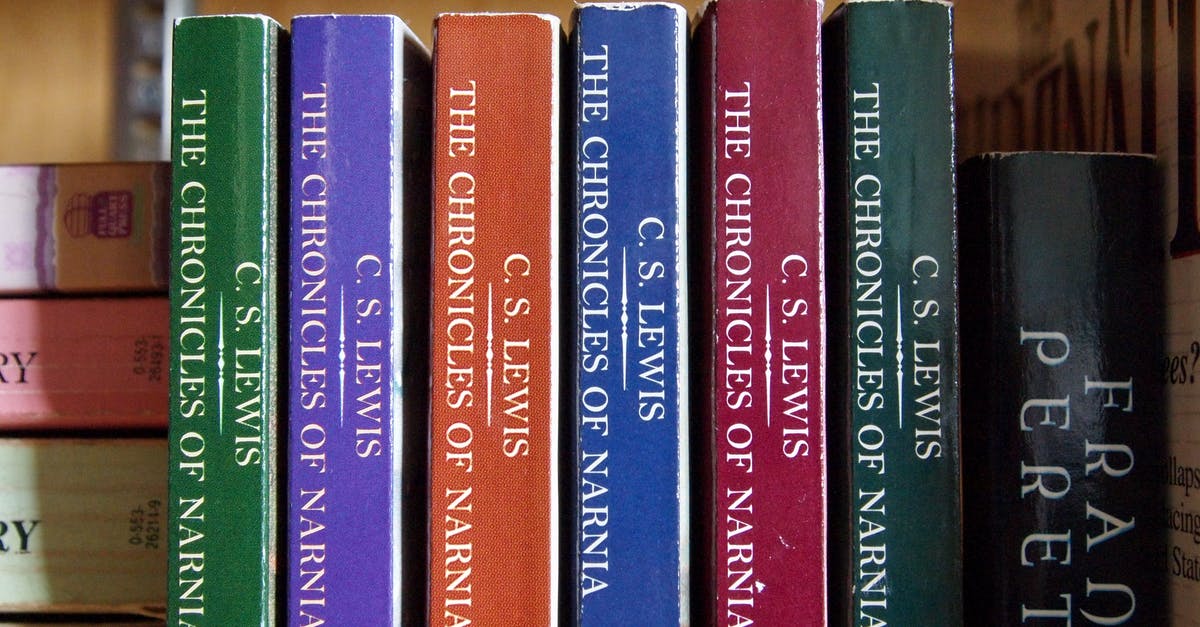What are the main differences between Dan Brown's 'Inferno' novel and Ron Howard's adaptation?

Some of the reviews, of Ron Howard's 'Inferno' adaptation of Dan Brown's book, mention an altered ending. One of the IMDB users wrote:
In a nutshell: Know that brilliant, creative, controversial yet elegantly beautiful plot twist ending we all know and love from the books? Well, here's a cheesy happy ending.
He (or She) then goes into an explanation of how the ending has been changed compared to the book.
Overpopulation is a problem and Dan Brown proposes an elegant solution in the form of a "plague" which PLOT TWIST: Doesn't actually kill anyone, but makes the 1/3 of the population (by random) become infertile.
Are there any other significant deviations from the book, and if so, what are they?
Best Answer
There are many differences between the movie and the book:
In the book, the person who finds Robert Langdon and Sienna in the Church where Dante was baptized is a man named Jonathan Ferris, who claims to be working for the WHO but is in reality an actor working for the Consortium. In fact Ferris was the one who pretended to be Dr. Marconi, who seemingly gets shot in the hospital in the beginning of the story. And while pretending to be the doctor, he has an allergic reaction to the bonding agent used in the fake beard, and the allergic reaction causes symptoms that makes Langdon suspect that Ferris is the carrier of the virus. In any case, Ferris is directed by the Consortium to hand Langdon and Sienna over to the WHO, so to escape Sienna makes it seem that Ferris is having a heart attack and she's performing CPR on him, when really she is incapacitating him. In any case, by the end of the novel Ferris is fine and he explains everything to Langdon.
In the movie Jonathan Ferris is replaced by a black guy named Christoph Bouchard, who really is a WHO agent and not a Consortium actor at all. In fact the Consortium actor who plays Dr. Marconi in the beginning plays no further role in the movie. In any case, in the movie Bouchard is a corrupt WHO agent who is trying to sell the Inferno virus to the highest bidder. (So they at least kept the part about him not being the good guy he claims to be.) He is killed by the Provost of the Consortium, which brings me to the second difference.
The Consortium is far more violent in the movie than in the book. In the book, Langdon calls the U.S. Embassy but he's really talking to a Consortium person. And then Vayentha is sent to the hotel across the street in order to make Langdon think the U.S. government is after him, to build trust between Langdon and Sienna so that Langdon will solve the puzzle for Sienna. But the Consortium's plan goes awry when Langdon accesses his email account from Sienna's laptop, which causes the WHO to find out his location. When the Provost finds out that the WHO is coming, he decides to abort the operation. In any case, when Vayentha points a gun at Langdon when they're atop the scaffold, she was planning to shoot the gun at him to show him that it only fires blanks and this was all a deception. So Sienna kills Vayentha in order to prevent her from revealing the truth, all the while pretending that she was saving Langdon's life from Vayentha.
In the movie, after Langdon and Sienna flee the apartment, the Provost issues a kill order for Langdon, which is something that the book's version of the Consortium would never do since they're just an acting troupe. (Although Vayentha does worry in the book that the Provost might have her killed.) In any case, in the scaffold scene in the movie Vayentha has a real gun with bullets, and Sienna really does save Langdon's life from Vayentha. Also, in the movie the Provost is a much more violent guy, someone who has a collection of weird-shaped knives which he uses when needed. Finally, I think in the movie the Provost may have been killed in the end, whereas in the book he's arrested for the role he played in helping Zobrist.
Siena's character is changed significantly in the movie. In the book, although Langdon and the WHO think that Sienna is trying to release the virus, in reality she's just trying to get to it first in order to destroy it. She doesn't trust the WHO to destroy it since the government might want to preserve it as a biological weapon. In the movie, she's blind follower of Zobrist who really does want to release the virus, and she closes the window on Langdon in Venice so she can release the virus in Istanbul. And in the movie she's ultimately killed while trying to release the virus. Whereas in the book, she survives and she plans to become an advocate for keeping the effects of the virus as they are. Which brings me to the next difference.
The nature of the virus is dramatically changed in the movie. In the book, everyone including Sienna assumes the virus is lethal, but in reality what it does is it renders a third of the Earth's population infertile, in order to solve the problem of overpopulation. In the movie, the virus really is lethal, and there's a big fight scene at the end where it's prevented from being released. In the book, the virus is actually released, in fact Zobrist released it a week earlier and it just took a week to spread over the world. So the world is left to contemplate whether they want to keep Zobrist's solution to overpopulation in place. I suppose Hollywood wanted to make the ending more exciting.
The book keeps the reader fooled for much longer. The Consortium is portrayed as a sinister spy organization for a very long time, and it's only at the end that it's revealed to be an acting troupe. In the movie the acting troupe revelation is a minor plot twist. Also, the movie reveals right in the beginning that the agents chasing Langdon work for the World Health Organization, whereas in the book they're portrayed as mysterious agents wearing green medallions and their true identity is only revealed when they capture Langdon. Finally, there's a long segment of the book where it seems like Jonathan Ferris (the equivalent of Cristoph Bouchard) is working for Zobrist, whereas in the movie the audience only thinks that for a small amount of time during the train scene and its aftermath, before it's revealed that he's motivated by greed. In the book it's only at the very end that it's revealed that Ferris works for the Consortium.
The movie adds a whole past relationship between Robert Langdon and a WHO director which is completely absent in the book. In the book, they're total strangers and the only potential love interest for Langdon is Sienna.
I think this is a case where the book was clearly better than the movie. Some books don't translate well to the screen, but in this case I think a more faithful adaptation would have done much better in the box office and with critics. The whole element of keeping the audience fooled might have made this into a Christopher Nolan-like movie with a mind-blowing twist at the end. Instead they decided to make it a standard Hollywood action movie. Dan Brown's other novels are pretty formulaic and fit better with the standard action movie plot, but Inferno was in my opinion Dan Brown's most creative and un-Dan-Brown-like novel. But that creativity wasn't translated onto the screen.
Pictures about "What are the main differences between Dan Brown's 'Inferno' novel and Ron Howard's adaptation?"



How does the Inferno book differ from the movie?
In the movie Inferno , Robert is able to stop the virus from being released into the world, but the book's ending is much more horrifying. The virus in the book is already released by the time Sienna and Robert get to it, and, with little hope of curing the virus, the characters decide to let it run its course.What happens at the end of the book Inferno?
In the final canto of the Inferno, Dante and Virgil leave Lucifer imprisoned in ice at the bottom of Hell and climb down his legs to come out the other side of Hell, on the opposite side of the world. It is night, so Dante and Virgil are able to \u201csee, once more, the stars.\u201d Inferno thus concludes on a note of hope.15 Things You Didn't Know About Dan Brown
More answers regarding what are the main differences between Dan Brown's 'Inferno' novel and Ron Howard's adaptation?
Answer 2
While the basic plot is the same, the film departed from the book in certain details. Scriptwriter David Koepp injected a romance angle between Langdon and Dr. Elizabeth Sinskey of the World Health Organization, which I admit was an interesting cinematic angle, however contrived. They also significantly changed the outcome of the events set the cisterns of Istanbul, Hollywoodizing the ending of the film as contrasted from the book.
Considering the movie has only recently been released, chances are more details will emerge later on when more people will have seen the movie.
Answer 3
There are a lot of (key) elements in the novel that were omitted in the movie, not to mention the unnecessary action-movie-kind-of-stunts that were wrapping the end of the movie. I also agree that there were too much more violence in the movie compared to the novel. The only notable deaths were one of Zobrist's at the beginning of the novel and that of Vayentha when she fell off the THIN layer of canvas (memory reserves) at the hall of five hundred.
They also disregard Sinskey's (presumably visually awesome) pendant and the fact that she was fertile and totally unrelated to Langdon and instead replaced it with an 'ex-lovers' reunion at an unlikely situation'.
Also the Ferris part, I recall there was rashes or allergy at the novel, but could not remember it until they changed it where Langdon has noticeable and worrying rashes, and was ultimately reminded that it was in fact Ferris who had the rashes. Also they replace the intriguing 'lovers moments' of Zobrist with unidentified person (it perceives me into thinking that Zobrist's lover was Ferris, while it's actually Sienna).
And to add it up, the fact that Sienna was actually bald and had a complex past, was nowhere in the movie, also, she did not die in the novel.
All in all, movie adaptations will always be inferior to orignal sources, but changing the decisive ending, really? This indirectly confirms that there won't be any sequel to the movie if the novel (hopefully) gets one due to that different ending.
Answer 4
Sienna was a totally different woman in the movie. Wrong hair, wrong eye color and of course her follicle issue. No silver haired devil here. Ferris was the wrong race all together. Other characters spoke facts and lines said by Langdon in the book. The ending, of course, was totally rewritten and not for the better. The book left you with the possibility that the outcome may have positive future results. A moral and ethical proposal all readers now faced.
Answer 5
The biggest difference is in the end. Spoiler alert: the film ends as any Hollywood film is expected to end: the bad people get killed, the good people win. The book is different in that in the end the virus is indeed released, but this virus is not as 'evil' as it is made to be in the film. In the film, people will die a painful death once the virus is released, however the virus in the book does not cause suffering or any death. In order to combat over-population, with the virus half of population is made infertile. And this virus is made by prominent scientists who are brave enough to admit how over-population is killing our planet and the only way to stop is to cut human birth rates. The book sends a very honest and true message, while the film is once again turned into a 'happy ending' where humanity can breed however they want and, thus, ruin the planet.
Sources: Stack Exchange - This article follows the attribution requirements of Stack Exchange and is licensed under CC BY-SA 3.0.
Images: cottonbro, Pixabay, Dario Fernandez Ruz, Lachlan Ross
